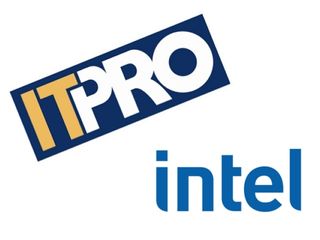IDF 2007: Q&A: The state of WiMAX
WiMAX will be an option on Menlow UMPC systems and Montevina Centrino notebooks next year and Intel is investing with KDDI in a bid to roll out WiMAX in Japan. IT PRO asked Sriram Viswanathan, the general manager of the WiMAX programme office at Intel - who's also the managing director of Intel Capital - what progress Intel has made on the prediction that 2008 will be the year of WiMAX.

Will WiMAX be an important wireless broadband service in Europe?
Europe will be potentially the last geography to have WiMAX. Europe went on a binge with 3G spectrum. The operators have to find a way to get out of the hole they're in; they all recognise they overpaid for 3G spectrum and they have to work out how to monetise that. If you'd asked me three years ago I wouldn't have predicted it but the US, the desert of broadband, is going to lead the charge. After that, operators in Asia are really on the leading edge deploying fixed WiMAX.
China, India, Russia - it's a lot easier for these countries to flip the switch and go to mobility from fixed WiMAX than it is for existing large operators in Europe that have spent so much money and are trying to find the business case for WiMAX. But there is no one [approach in] Europe; there are a number of operators like BT or Orange who have each very different view on WiMAX from Vodafone. You could argue Vodafone is the big cheese and the fact that it is embracing WiMAX is a big testament, but Vodafone only just joined the WiMAX Forum and its looking at deploying WiMAX in emerging markets where it has minimal presence.
The European operators will be the last to commit but they will do that, especially if you see the ITU making the right move to include WiMAX as a 4G solution.
So you think the last regulatory issues will be solved soon?
Once we cross that bridge it makes it a lot easier for operators to use the same bandwidth for WiMAX. The battle is not over in the ITU - it still has to be approved - but that's not to say we can't deploy before. We have reasonable confidence it will occur before the end of this year, specifically in October. There's a host of companies - including the US government - pushing for it to be included.
The UK auctions are likely to come in the first half of 2008; Ofcom has delayed it twice already. It's a question as to how many of the operators join in - I'm sure BT will have some interest in it, I'm sure Orange will have some interest in it and maybe the National Grid too.
Get the ITPro. daily newsletter
Receive our latest news, industry updates, featured resources and more. Sign up today to receive our FREE report on AI cyber crime & security - newly updated for 2024.
Is there a problem with different countries using different spectrum? Are we going to be able to take a WiMAX notebook to another country and use it?
Most of Europe is using 3.5GHz. There are a few geographies where 2.5GHz is becoming more prominent, like Germany and the UK. One of the things that is likely to happen now worldwide is just like with Wi-Fi where we went through a pretty significant effort on harmonising spectrum. We think 2.5GHz is becoming one of the anchor spectrum bands.
Roaming is going to hopefully much better than the roaming constraints we have had with Wi-Fi, but it is going to be a while before it gets as good as it is today with cellular. There will be a lot of bilateral roaming that will have to happen - like Clearwire and Sprint, and Sprint and KDDI will do roaming if KDDI wins - before we get multi-lateral roaming agreements. You have to expect that when you have a new infrastructure.
How are we going to manage using a WiMAX service with multiple devices? What kind of devices might get connected?
If you ask Sprint, they will tell you they would expect the pricing scheme to vary between devices based on the usage. A laptop is more of an always-on, always-connected, always-broadband device whereas a camera would be more of an ad hoc connection. The cost would be less than $5 for a camera but substantially higher on a laptop. Potentially you'd get that as a bundle; the operator would offer a base package on one extreme where you have just one device and on the other you have all you can eat on all of your devices.
It's going to be a long time if ever before a camera has a cellular chip in it but it's reasonable to expect a Wi-Fi or WiMAX chip in a camera. Sprint, for example, is working with Google on a service offering for 4G WiMAX. If Samsung comes up with a WiMAX camera Sprint could offer a service for that Samsung camera to take pictures and upload them to [Google's] Picasa software, for a specific price.
What difference is building in WiMAX going to make to a notebook? Will you get the same battery life as Wi-Fi? Is there a reason not to build WiMAX into a Montevina notebook?
Echo Beach is literally expected to go into the same slot and go into the same power envelope in the system as Wi-Fi. From a performance standpoint at the platform level it's going to be the same form factor, the same power budget and with, hopefully, no degradation in battery life. Obviously there'll be a difference in price.
What's the biggest problem we need to solve to make WiMAX a real solution? Is it technology/business models or regulation?
Mary is a freelance business technology journalist who has written for the likes of ITPro, CIO, ZDNet, TechRepublic, The New Stack, The Register, and many other online titles, as well as national publications like the Guardian and Financial Times. She has also held editor positions at AOL’s online technology channel, PC Plus, IT Expert, and Program Now. In her career spanning more than three decades, the Oxford University-educated journalist has seen and covered the development of the technology industry through many of its most significant stages.
Mary has experience in almost all areas of technology but specialises in all things Microsoft and has written two books on Windows 8. She also has extensive expertise in consumer hardware and cloud services - mobile phones to mainframes. Aside from reporting on the latest technology news and trends, and developing whitepapers for a range of industry clients, Mary also writes short technology mysteries and publishes them through Amazon.





